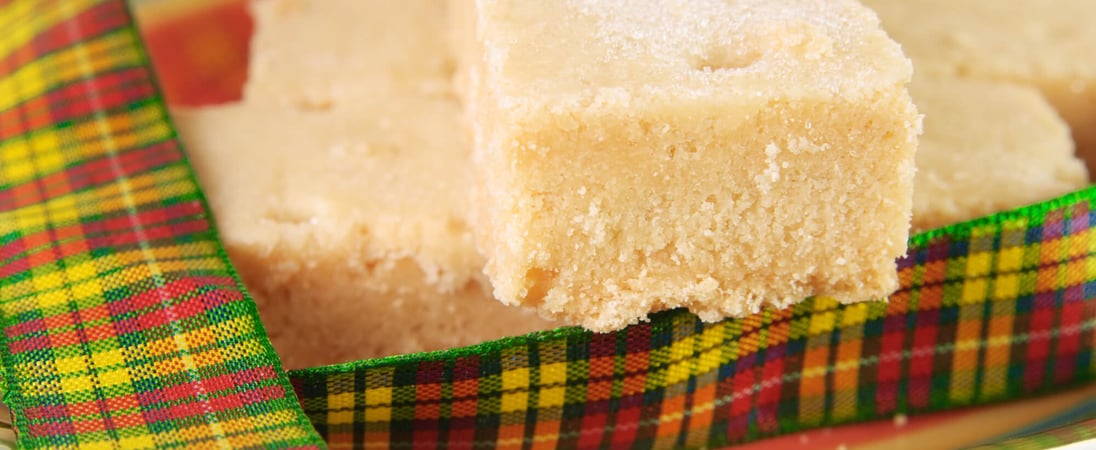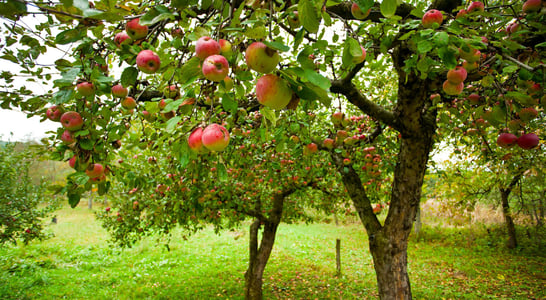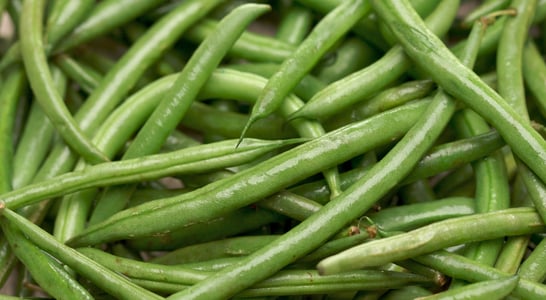
National Shortbread Day
Delicious buttery biscuits, perfect for any occasion, with a crumbly texture that melts in your mouth and a hint of sweetness.
There are very few foods in the world that can make a person think of Scotland quite so strongly as shortbread does.
The only other close contender would be haggis–and that food tends to evoke rather mixed sentiments when mentioned to anyone outside of Scotland!
Yeah, there are Scotch eggs too, but it seems an important reminder that while they are decidedly British in invention, it is somewhat harder to pin them particularly on Scotland.
Scotch whiskey is a beverage, after all, so it doesn’t really count when it comes to Scottish foods. While no Robert Burns Night observance would be complete without some shortbread, it seems that having a day dedicated to the making and eating of shortbread can’t really be a bad thing on its own.
After all, who doesn’t like shortbread? So now there are two different days where it is delightful (if not compulsory!) to enjoy shortbread.
This is true, even though everyone knows that shortbread is good year round and no one really needs an excuse to make and enjoy shortbread on any day of the year!
Now it’s time to celebrate National Shortbread Day!
How to Celebrate National Shortbread Day
Celebrating National Shortbread Day is a delightful pursuit that brings with it thoughts of Scottish Highlands and plaid kilts. For ideas on how to celebrate the day, here are some ways to get started:
Eat Scottish Shortbread
Many people would probably say that the best way to celebrate National Shortbread Day would have to involve shortbread in some form or another!
For some, that might mean going out to get those cute little boxes of imported Scottish shortbread in some specialty shops.
This sweet, crumbly, delicate treat is especially delightful when enjoyed with a cup of tea. Either keep it simple by having tea alone or with a friend, or go big and invite over a group of friends and family to celebrate by making and eating far too much shortbread!
Embrace Scottish Culture
Part of celebrating National Shortbread Day involves embracing a variety of cultural traditions and activities that are native to Scotland.
This could be something small, like wearing a kilt to work for the day, or something large like taking a trip to Scotland. This would be a great day to spell everything in the British style by adding the ‘u’ (i.e., flavour, favour, labour and humour).
Learn Fun Facts About Shortbread
Made more for special occasions than everyday occurrences, shortbread comes with its own set of Scottish traditions.
Learn about some of these bits of trivia and impress friends or coworkers by sharing them on National Shortbread Day:
-
Shortbread has been typically eaten for weddings, Christmas, New Year, and Burns’ Night, which is the celebration of Scottish poet Robert Burns.
-
For weddings, sometimes a decorated shortbread cake would be broken over the head of a new bride at the threshold of her new home.
-
Early on, Scottish bakers worked hard to defend their precious shortbread from being categorized as a ‘biscuit’ in order to keep it from incurring the special biscuit tax imposed by the government.
-
Shortbread is made in many shapes, including rounds, fingers or triangles (“petticoat tails”) which were reminiscent of the petticoats that would have been worn during the time of Mary, Queen of Scots.
Make Shortbread at Home
Some people might think that buying shortbread is not quite adequate. In this case, why not attempt to make your own version of shortbread right at home?
Although it might seem hard, it’s not really all that difficult to make shortbread. In fact, most recipes are fairly simple, basically involving just one part sugar, two parts butter and three parts flour. It is possible, of course, to add various things to it as well.
Anything from dried fruits to chocolate chips to lavender would be a welcomed addition, but the basic recipe remains the same.
Given the fact that it’s simple and easy to experiment with, it doesn’t seem like there is really any excuse for anyone to not make some delicious shortbread for National Shortbread Day.
Shortbread Recipe
What’s that? Are you saying, “but I don’t have a recipe for shortbread, how can I make it?” Well, this situation is perfect, then, because there’s a recipe for shortbread included right here.
This is just so that excuse cannot impede anyone from actually making and enjoying shortbread.
So here it is:
2 1/4 cups (12oz) all-purpose flour
1/2 cup (4oz) sugar
1 cup (8oz) butter
Preheat the oven to 375°F/190°C and mix all of the ingredients together until they form a stiff dough. At this point, it’s time to add any additional ingredients like chocolate chips or lavender. It doesn’t make much difference whether choosing to mix by hand or using a mixer.
Roll out the dough and form round shapes, which can then be scored into triangles. Prick each piece with a fork to avoid getting air bubbles.
Another option is also to use a shortbread mold as well. Place on a cookie sheet and bake for 25-30 minutes. Then sprinkle it with sugar immediately upon removing it from the oven.
Congratulations, you now have freshly-baked shortbread to enjoy for National Shortbread Day and all-year round!
History of National Shortbread Day
For those who might be wondering about the history of shortbread itself, now is the time to learn a bit about it.
As it turns out, shortbread has medieval origins and supposedly Mary, Queen of Scotland, invented modern shortbread in the 16th century by adding sugar to an existing recipe. Rumor has it that these were originally flavored with caraway seeds, but Queen Mary decided to sweeten it up a bit.
Of course, it can’t be verified whether or not that story is true, but it’s a fun idea to go along with. Honestly, that story sounds a bit like one of those popular myths such as George Washington’s cherry tree but, for all anyone knows, it could actually be based in fact.
What is known to be true is that Scotland has been inseparable from shortbread since the 18th century. After all, the first printed recipe for shortbread was published by one Mrs. McLintock back in 1736 and the association has stuck ever since.
While the mid-18th century was a critical period in Scottish history, even something as mundane as a recipe became a marker of national identity. Therefore, it is important to say that shortbread is delicious and is worthy of such an honor.
Did You Know?
In 2021, Walker’s Shortbread launched its own National Walker’s Shortbread Day on January 6th to celebrate the Scottish family bakery and its iconic buttery biscuits.
While the wider National Shortbread Day honours all varieties, Walker’s created this brand-specific observance to spotlight its heritage, traditional recipes, and love of all things shortbread.
National Shortbread Day FAQs
Did Shortbread have magical associations in early Scotland?
In ancient Scottish folklore, round cakes like shortbread symbolized the sun and were thought to harness its power.
During Hogmanay (New Year’s Eve), these “sun cakes” were often baked and shared as part of rituals believed to bring good fortune and ward off evil spirits for the coming year.
What’s the origin of Shortbread’s unique shape names?
Traditional shortbread shapes like “petticoat tails” have interesting backstories.
Some say the triangular “petticoat tails” design mimics the shape of 16th-century petticoats, inspired by Queen Mary of Scots’ attire. The term may also derive from the French petites gatelles (“little cakes”).
Is there a historical recipe for Shortbread that includes spices?
Yes! Early versions of shortbread included spices like caraway seeds, which were considered a luxury.
Known as “Parliament cakes” or “parlies” in the 19th century, these spiced Shortbreads were popular in Edinburgh, especially among politicians.
How did Shortbread survive Scotland’s 1980s “tax war”?
In the 1980s, the EU attempted to reclassify Shortbread as a “common biscuit,” imposing higher taxes.
The Scottish Association of Master Bakers defended its “cake” status due to its unique recipe and historical significance.
Eventually, the effort succeeded, and Shortbread remains classified under a lower tax rate in Scotland.
Why is Shortbread a popular gift at Scottish weddings?
In Shetland, it’s traditional to break shortbread over a bride’s head as she enters her new home—a gesture meant to ensure a lucky and prosperous marriage.
This custom showcases shortbread’s long-standing place in celebrations and rituals.
What’s the story behind “Millionaire’s Shortbread”?
“Millionaire’s s]Shortbread” is a modern twist on traditional shortbread that adds layers of caramel and chocolate.
It’s popular in Scotland and the UK, combining Shortbread’s classic crunch with indulgent sweetness—a treat fit for a millionaire.
Why is Shortbread linked to the winter holidays in Scotland?
Shortbread’s association with wealth made it a special occasion treat, reserved for Christmas and Hogmanay.
Its high butter content was a splurge for many, so people saved it for gatherings where they could share it with friends and family.
How is Shortbread different from regular cookies or biscuits?
Unlike cookies, Scottish shortbread contains no leavening agents, making it dense and crumbly.
The term “short” refers to its high butter content, which gives it a “short” texture. This rich flavor is essential to Scottish shortbread’s appeal.
Is Shortbread popular outside of Scotland?
Yes, shortbread has variants worldwide, including Danish butter cookies and Irish “shortie” biscuits.
Despite this, Scottish shortbread remains the best-known due to its refined simplicity and export through brands like Walker’s.
What’s the historical significance of Shortbread in Scottish culture?
Shortbread’s simple ingredients made it a symbol of wealth, served only at events like weddings and holidays.
Over time, it became a national symbol of Scottish hospitality, especially for the “first-footers” who visit homes on New Year’s Day for luck.
Also on ...
View all holidaysApple Tree Day
Experience the joy of picking your own fruit straight from nature's bounty and enjoy a sweet treat that's truly farm-to-table.
National Smith Day
A moniker both common and widespread, often passed down through generations, evoking a sense of tradition and heritage.
National Bean Day
Discover a world of hearty goodness, as these tiny powerhouses pack a punch of protein and flavor, making every meal satisfying.
National Cuddle Up Day
Snuggle up by the fire with your loved ones, whether your partner, kids or pets, and enjoy the varied health benefits of a cozy embrace.




